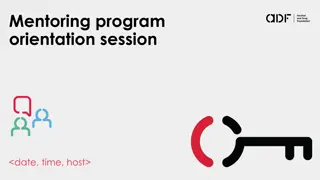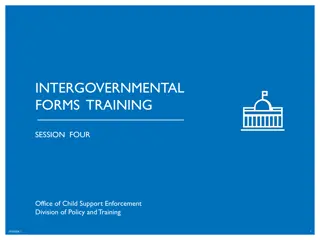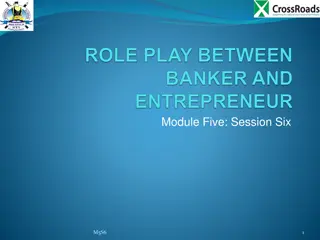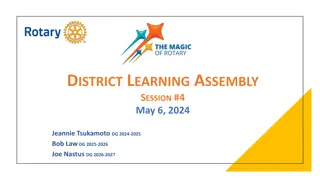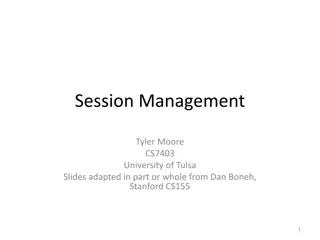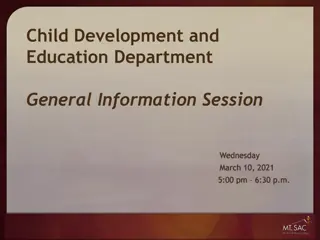
Group Learning and Discussion on Sensitive Topics
Join us in a program where we learn and work together on sensitive issues, respecting emotions and personal experiences. Confidentiality, appropriate language, and supportive environment are key. Be prepared for discussions on sexual violence perceptions, social norms, and bystander behaviors.
Download Presentation

Please find below an Image/Link to download the presentation.
The content on the website is provided AS IS for your information and personal use only. It may not be sold, licensed, or shared on other websites without obtaining consent from the author. If you encounter any issues during the download, it is possible that the publisher has removed the file from their server.
You are allowed to download the files provided on this website for personal or commercial use, subject to the condition that they are used lawfully. All files are the property of their respective owners.
The content on the website is provided AS IS for your information and personal use only. It may not be sold, licensed, or shared on other websites without obtaining consent from the author.
E N D
Presentation Transcript
We will learn & work together as a group in this programme. Some of the material is sensitive & some of us will have personal experience of the things we discuss. We will all be respectful of personal emotions as we learn. Confidentiality Appropriate language Attendance Communicating with the facilitator Please be aware that we will be discussing sensitive issues that might have affected you or people you care about. If you feel uncomfortable or upset it is fine to leave the space. Facilitators will understand & are trained to help you.
Social Norms Feedback 1 Students at Strathclyde rate themselves as less supportive of sexual violence and rape myths than their peers. Would stop sexual activity when asked to even if aroused NORM Actual (self) Perceived (Peers) 88.4% 79.9% NORM Agree: When girls go to parties wearing slutty clothes they are asking for trouble Actual (self) Perceived (Peers) 2.1% 30% Agree: If a girl doesn t physically resist sex even if protesting verbally - it really can t be considered rape NORM Actual (self) 2.6% Perceived (Peers) 18%
Strathclyde students: Perceived peer norm Who Agree: If a girl doesn t physically resist sex even if protesting verbally that it really can t be considered rape? Disagree 82% Agree 18%
Strathclyde students: ACTUAL norm Who Agree: If a girl doesn t physically resist sex even if protesting verbally that it really can t be considered rape? Disagree 97.4% Agree 2.6%
The Result of Misperceptions I m *** !!! *** uncomfortable but I m the only one Don t say stuff like that. Strathclyde students think more people hold problematic views about sexual violence than is actually the case: Your views are the majority, healthy positive views.
Social Norms Feedback 2 and... for helping behaviour (positive bystander behaviour) we think others are less likely to help than we are ourselves. Likely to approach a friend in an abusive relationship to offer help NORM Actual (self) Perceived (Peers) 96% 84% Do something to help a person who appears intoxicated being taken upstairs at a party NORM Actual (self) Perceived (Peers) 2.1% (Men) 30% (Men) 87% (Women) 81% (Women)
4 Stages for Intervention 1. Notice the event 2. Interpret it as a problem 3. Feel responsible for dealing with it 4. Possess necessary skills to act [Adapted from Berkowitz, A. (2009) Response Ability: A Complete Guide to Bystander Intervention, Beck & Co., p. 10]
**WARNING** Some viewers may find this clip difficult to watch New Zealand Bystander Video YouTube: https://youtu.be/iUj2OHLAG3w
Q. Q. Discussion The Flatmate Who could have intervened to stop this happening? When could they have intervened? The Best Friend The Bystanders Stranger The Bartender
Bystander Intervention Options Decide to Intervene During the Incident Indirect (to the Bystander) Direct (to the Offender) OR After the Incident Set limits or express feelings Change the focus: Non-participation Change the subject Interrupt / distract Change the person/shift attitudes Confrontation: Assess norm Engage allies & bystanders Make a plan Develop a support for next step Offer support to the victim Adapted from Berkowitz, A. (2013). A Grassroots Guide to Fostering Healthy Norms to Reduce Violence in our Communities: Social Norms Toolkit. USA: CDC. Online at: http://www.alanberkowitz.com/Social_Norms_Violence_Prevention_Toolkit.pdf
UW-Madison Bystander Intervention YouTube: https://youtu.be/491e8Oku0Jw Range of Behaviours Healthy, age-appropriate, mutually respectful, safe Mutually flirtatious, playful Situation- or age-inappropriate or non-mutual Harassment Sexually abusive & violent
Only intervene when it is safe for you to do so. If not safe, in an emergency, dial 999.
WHEN? AFTER DURING Advantages Advantages Disadvantages Disadvantages
How might you intervene in the moment?
Suggestions Shift the Focus Confrontation Interrupt the behavior (Diversion/distraction Say why it is unacceptable Don t respond, laugh or engage. Leave. Say why it bothers you Raise consequences that the offending person identifies with Deflection change the subject Reframe Change the remark into something positive
How might you intervene later?
Suggestions Shift the person / change attitude Confrontation Ask another person to intervene Offer the help the victim
Confrontation Express interest in offending person Give reasons why you are concerned Share how you/others feel Ask if the offending person understands your point Look at alternative behaviour/ support them in change - I care - I see - I feel - I want - I will Adapted from http://stepupprogram.org/wp- content/uploads/2014/04/Step UP_Intervention_Styles.pdf Adapted from Berkowitz, A. (2009) Response Ability: A Complete Guide to Bystander Intervention, Beck & Co., pp.42-44
Shift the person / change attitude Make them understand why they behave as they do and why their behaviour is problematic so you change their attitude Needs a conversation with respect for all listening is important Identify what is underlying the behaviour Engage in open talk show interest in understanding the person and why they behave as they do Adapted from Berkowitz, A. (2009) Response Ability: A Complete Guide to Bystander Intervention, Beck & Co., pp.47-51









